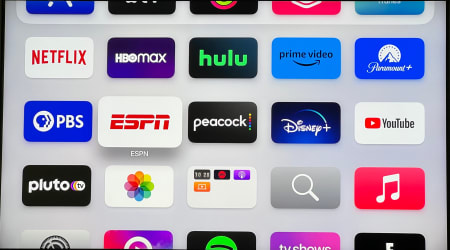The 2023 guide to moving to Portugal with your cellphone
Published
technologysmartphonesfeaturedKeep your US phone number after moving to Portugal

Before diving into the gory details, I want to emphasize a few key concepts. Once you’re onboard with these concepts, I believe you’ll find the rest of the process to be at least manageable, even if you are not a “technical” person.
First key concept: your experience traveling with your smartphone to Portugal is very different from actually moving to Portugal. Don’t make the mistake of simply assuming that what worked on vacation will just keep working after you move; it won’t.
Don’t put this off until after you move. The best opportunity to make these changes will be when you are still in the US. If you wait until after moving to Portugal, you will have fewer choices, face a more complicated process, and more limited options to fix things if something goes wrong. Allow yourself three or four weeks to make sure everything works before moving.
The ideal setup
For most people, I believe this is the best setup:
- Dual SIM phone, either Android or iPhone. At least one of the SIMs must be an eSIM. Also, make sure your phone supports Wi-Fi calling.
- Important! You need to own your phone and it must be unlocked. None of this works if you are still making payments to your current US carrier. If that’s you, stop reading now, go pay off your phone, make sure it is unlocked and come back.
- Port the old USA phone number to either a VoIP or MVNO phone service. If you decide on an MVNO service, assign that to the eSIM.
- Side note: I know I’m using countless acronyms, sorry about that. I’ll explain these further down.
- Sign up for service from one of the Portuguese mobile providers, MEO, NOS, or Vodafone and assign that to your primary SIM. This is now your main phone number and only source for mobile data while in Portugal.
Why is this the best approach for most people? Several factors:
- You 100% need a Portuguese cellphone plan and phone number, and plans are much affordable than what we’ve been used to in the US.
- You get to keep your US phone number for occasional use.
- You only require one phone per person, and once set up, you won’t need to swap SIM cards or any other nonsense like that.
- The combined costs of your Portuguese mobile phone plan and your new low-cost service for your US number will almost always be lower than what you were paying for Verizon/AT&T/T-Mobile.
Reasons to keep your US phone number active
- Contact with friends and family who may not be willing to use a messaging service like WhatsApp.
- Accounts and services that list your US phone number as the primary contact method.
- You may have a business need tied to that phone number, such as calls from clients.
- You might have frequent travel to the US and require easy access to a US cellphone network.
- You might be stuck having to rely on receiving 2FA codes by SMS text message to your US phone number.
Why you absolutely need a Portuguese cell phone number
- Portuguese cell phone service is affordable, reliable, and very high-quality.
- This is an important part of integrating as an immigrant.
- Scheduling doctor appointments, picking up prescriptions and other health care services will be much more difficult for you, and make things tougher for the provider, too.
- Using delivery services will be difficult, and often, impossible without a Portuguese phone number. Grocery deliveries, Ikea, Uber Eats, Glovo and many others require you to provide a local number in case the driver needs to call.
- Banking can be a lot more difficult if you only have a US phone number. 2FA codes, for example, may not get delivered to a US phone number.
- Most online shopping will require a Portuguese cell phone number to receive 2FA codes from the 3D-Secure card payment verification.
Porting: how to move your US phone number to a lower-cost option
You have 3 main options for maintaining your US phone number when you move:
- Keep your existing carrier, most likely a mobile network operator (MNO)
- Port your existing phone number over to a mobile virtual network operator (MVNO)
- Port your existing phone number over to a voice over Internet Protocol (VoIP) service
| MNO | MVNO | VoIP | |
|---|---|---|---|
| Well-known providers |
|
|
|
| Advantages |
|
|
|
| Disadvantages |
|
|
|
| Uses a SIM? |
|
|
|
The MNO option
An MNO is your traditional cellphone service provider. They own their own wireless network of cellphone towers, and when you buy directly from an MNO, you get the best access to their wireless network. AT&T, Verizon, and T-Mobile all compete on the quality and availability of the wireless coverage in the US. For a great many, that is the most important factor to consider when selecting a provider in the US.
Unfortunately, when you move to Portugal, sticking with your current MNO is clearly the worst option available. It is expensive, you may accidentally incur huge roaming charges, and you face the risk of getting cut off after 3 months. The biggest problem, though, is paying a premium price for access to a cellphone network that is 5,000 miles (ca. 8,047 km) away. The primary value that an MNO provides simply is not available to you in Portugal.
You have an interesting choice, though, between MVNO and VoIP providers. While both help you accomplish basically the same thing, these are entirely unique technical approaches, and understanding some basics of each will help you decide what best fits your needs.
The MVNO option
A mobile virtual network operator (MVNO) resells access to one of the networks owned by the big mobile network operators in the US. For example, Mint Mobile resells access to the T-Mobile network. Mint Mobile doesn’t have a store on every corner, and offers “no frills” service. When there’s high demand for service in a specific area, Mint Mobile customers will not receive the same priority access as full price T-Mobile customers. But, when you spend most of your time in Portugal, that doesn’t matter as you will never access that mobile network anyway.
There are 2 advantages for going with an MVNO provider:
- More reliable 2-factor authentication code delivery. You should avoid relying on text messages for 2FA codes whenever possible. But occasionally you’re stuck with a bank or online service that uses outdated processes. There are some banks and online services that will not send 2FA text messages to VoIP phone numbers. Typically, that’s not a problem, but if you rely on a bank or service that has this problem, you’ll need to use an MVNO provider.
- If you travel back to the States fairly often, using an MVNO to park your US phone number means you have a mobile network waiting for you when your airplane lands in the States. You might have to tweak some configurations, but essentially, your phone is ready to connect the moment you take it out of airplane mode. If you are using VoIP option, you would need a travel SIM or eSIM when in the States. If you don’t travel to the US that often, then not a big deal.
My recommendation (updated August, 2023) I recently switched from Mint Mobile to Tello for a few reasons. First, Tello is a competing MVNO, so it has the same basic advantages as Mint. But, Tello offers much more flexible plans that you can easily change when needed, and they actively court Americans living abroad.
When residing in Portugal, they have a $5.00 per month option with no data, 100 minutes of voice and unlimited texting. That is 1/3 the cost of Mint for essentially the exact same results when living in Portugal. If you have a trip back to the States, you can temporarily upgrade your account to include 5GB of data for a month, costing only $16 for that month. You can then revert back to the $5 per month plan when you get back to Portugal.
Tello also makes it very easy to activate your account and port your phone number if you are already in Portugal. Mint only allows you to activate your account by connecting to a US cellphone tower. So, if you neglected to port your phone number to a low-cost carrier before you moved, Tello is really your only option for an MVNO.
The VoIP option
Voice over Internet Protocol (VoIP) relies entirely on an internet connection for your device, and the service can then route calls and SMS text messages back and forth between their service and more traditional cellphone services and even landlines for voice calls. Since a VoIP service does not rely on directly connecting to a cellphone tower, there’s no need for any type of SIM, and you can use VoIP services on pretty much any internet-connected device. VoIP services also tend to offer many sophisticated features that might appeal to business operators. There are fewer geographical limitations when setting up a VoIP service, since you won’t have to connect to a cellphone tower to activate.
But, VoIP services are less reliable when it comes to receiving 2FA codes. Services like Twitter, PayPal, and even Google themselves won’t work with 2FA text messages to VoIP lines. I’ve seen plenty of reports from people whose bank suddenly stopped working or never worked at all. Moreover, by moving your US phone number over to a VoIP service, you will need to arrange for a travel SIM/eSIM should you visit the US.
What type of service should I get then?
That’s the key question, and ultimately, you will need to make the call based on your unique situation. I can say with a high degree of confidence that keeping your service with AT&T, Verizon, or T-Mobile is a bad idea for nearly anyone moving to Portugal. Sure, there may be a few very rare exceptions, but I’ve yet to see a single compelling reason to stick with one of these providers beyond fear of change.
The good news is that there are many viable options for an MVNO or VoIP provider. I’ve been using Mint Mobile for the past year, and have had zero problems with it. At the same time, I ask very little of it, beyond getting 2FA codes texted to me from 2 accounts that I’m stuck with for now. On a recent trip back to the States, it was nice having my phone automatically connect when I landed in Seattle. But, at $180 a year, it is a bit expensive.
If you are considering a VoIP option, iPlum is quite popular, and for good reason. The rates are quite low, and they offer many sophisticated features including branching voice mail options and interactive voice menus, which could be helpful for some.
I know countless people use Google Voice, but I cannot recommend using that service. I have been burned in the past by Google either shutting down or making significant changes to their free services (Google Reader, Google Optimize, and Google Analytics comes to mind). I would rather pay a small monthly fee and get good, reliable support rather than relying on Google to do the right thing for people using their free services. But, that is just my opinion, and you’re welcome to try whatever you like. If you do decide to use Google Voice, just make sure to lock down your Google accounts with a super-strong password and use the Google Authenticator app for your 2A.
What is involved in porting my phone number to a new service?
Each provider will have a slightly different process, and the new provider will provide you with very specific instructions and support to port your phone number over to the new provider. Here’s a rough overview:
- Sign up for service with your new provider. You will be assigned a temporary phone number.
- Log in to your current provider and disable any SMS text based 2FA on that account. On the off chance something goes sideways, you will need access to your account with your current provider, even if you are temporarily unable to receive text messages.
- Make sure your phone number has been enabled for porting from your current provider. You may need to call your current provider to enable this.
- Log in to your account with the new provider and start the porting process, following the instructions they provide. This will replace the temporary phone number you got when signing up with your actual phone number.
This process usually takes less than an hour, though it might take up to a day to complete. Work closely with your new provider to ensure a smooth porting process.
Do not cancel your old account until you have confirmed that you have successfully ported your number to your new account.
If you have a family plan, port all the other phone numbers before attempting to port the primary phone number for the account.
FAQs
In my opinion, a recent iPhone is the best option available. This includes any of the iPhone 11, 12, 13 and 14 models (mini, regular, Pro or Max). The iPhone SE 2 is a great option, too. Even the older iPhone X, XR and XS phones will work. Why the iPhone? The number one reason is you will have a consistent experience across all of these models. All support Wi-Fi calling and eSIM. These phones are readily available here in Portugal, and are supported by all carriers.
Android phones are just more work. For some people, that’s okay, but for most who just want a phone to work, Android phones can be a bit of a hassle. Samsung phones are better than most, and are easy to find in the US and Portugal. The Google Pixel is a great phone, but not available in Portugal, so no warranty support. Android phones were the first to support eSIM, and yet today, a great many models still only come with 2 physical SIM card slots, and no support for eSIM. Only the high-end Samsung S and Z series support eSIM. Got a new Samsung A23? Too bad, no eSIM support. I’ve read of other manufacturers releasing software updates that disabled support for Wi-Fi calling. In my view, it is just a mess and not worth the hassle. If you want the smoothest experience, get an iPhone. If you really want an Android, then get a newer Samsung S or Z series, like the S21 or newer. Any other Android phone? You’re asking for trouble, in my opinion.
If you want to maintain a US and a Portuguese phone number, and you want a phone that is easy for traveling to other countries, you need Wi-Fi calling and eSIM support. Only the iPhone offers that across all models sold in the last few years.

No, this will not work beyond the first few weeks. Not only will you spend a lot more money than needed, you will risk having your account suspended for being outside the US for too long.
When traveling outside the US, you can pay extra for roaming service to give you access in a different country. Cellphone companies have agreements in place with cellphone companies in other countries to provide “guest access” for their customers. For example, a T-Mobile customer might get temporary access to the MEO mobile network in Portugal for a period of time. In most cases, you’ll enjoy a strong signal, fast data, and voice and text messaging, but this is not meant to be a long-term solution.
An international plan allows you to call people in other countries from within the US. An international plan has no value or purpose when you are outside the US.
Dual SIM phones are a key advance in cellphone technology that makes it possible for one phone to connect to two different cellphone networks. Dual SIM phones go back to the early 2000s but really started to take off around 2007, and are fairly mainstream by now. Apple was the last major manufacturer to adopt dual SIM phones with its 2018 iPhone XS models. Today, most phones have a physical SIM slot and support for an eSIM, though the iPhone 14 is now sold in the US with dual eSIM capability.
You designate one SIM and phone number as your primary, and the other as the secondary line. Your primary line is the source for your data, and you can designate what line to use when sending text messages or placing phone calls.
A SIM, or Subscriber Identity Module, is a chip with a unique identifier that authenticates your account to the cellphone network, granting you access to that network. For the longest time, this was a small chip that you received from your provider when you opened the account, and inserted in your phone.
Recently, this functionality has become available as an eSIM, or embedded SIM. The eSIM is a chip built into the actual phone that can be re-programmed by the user with the correct account identification information. This makes activating a new account much easier as you don’t even have to visit a store to get a SIM card, and can activate your new account right away.
Definitely. I recommend that you have a newer model, anything from the 2018 iPhone XS onwards will work great, since they all support dual SIM technology. Using an iPhone here in Portugal is pretty seamless. As of the time I wrote this article, there are now Apple Stores in Portugal, but there are several authorized retailers who can provide support, such as iStore.pt.
The Google Pixel phone is an excellent phone, and starting with the Pixel 4 series, has has the technical requirements to work well for your move to Portugal. But, Google does not officially sell or support their Pixel phones in Portugal, so if you need warranty support, you may struggle to get warranty support. Google only officially sells and supports their Pixel phones in a few European countries. Third-party repair will likely still be available, but since few people in Portugal have Pixel phones, you may have to check around to find a repair shop with experience and access to parts to repair a Pixel phone, should the need arise.
Generally speaking, yes. But, there are so many options for Android phones, there may be some compatibility issues with the radio frequencies used here. Furthermore, some very popular Android phones in the US, such as the Google Pixel, are not even available here in Portugal. Samsung and Xiaomi seem to be the two most popular brands. I recommend verifying your specific model before moving, just to be safe.
No. see this Google support article. Google Fi is not intended for long-term travel outside the US. Google Fi is also relatively expensive, and you’re paying a premium for large amounts of data, but you can only use roaming to access that data. I’ve read several reports of people losing access to their service, especially their data service, when they’ve been out of the US for more than 90 days. And Google is very up-front about this. You wind up paying a premium price for premium features you can’t access, and you run the risk of losing access to parts of your service after 90 days. There are so many better solutions for people wanting to keep the US number after they move to Portugal. Google Fi is great for travel, terrible when you move.
Google Voice is a better option, but, in my opinion, not in the top tier of choices for people moving from the US to Portugal. Since Google Voice is a VoIP service and does not require any form of SIM, it also does not require you to periodically connect to a US cellphone tower. But, Google Voice is not the most reliable means of receiving 2FA codes by SMS text, as with any VoIP service. Hopefully, you’ve moved on from relying on SMS text for 2FA codes, but if you’re stuck with an account that still uses them, there’s always a small risk that will fail with Google Voice. It is hard to argue with the price, and the features and technology behind Google Voice are all first-rate, so for many, the risk is worth it.


